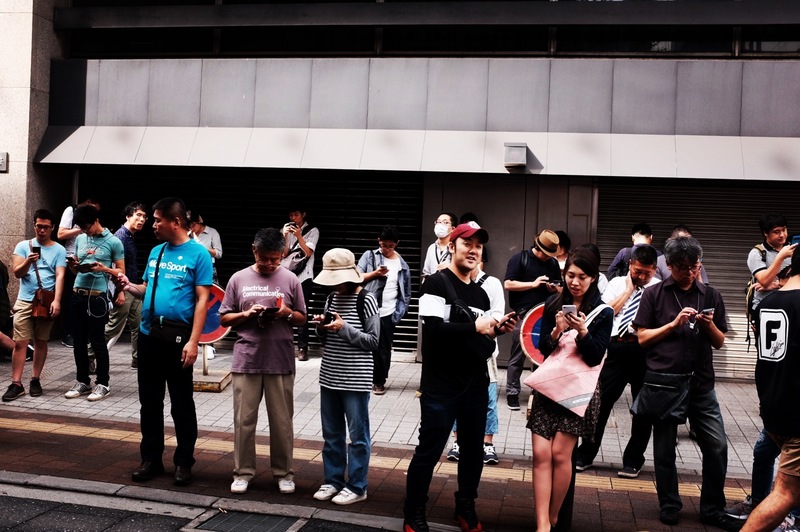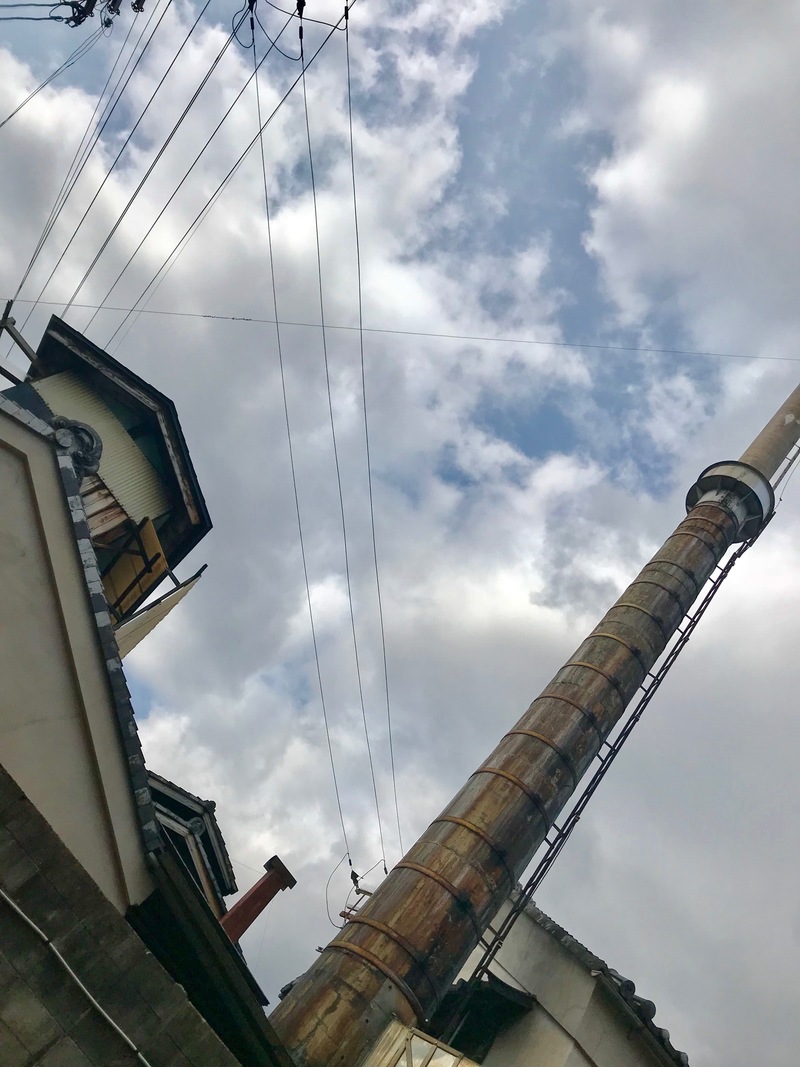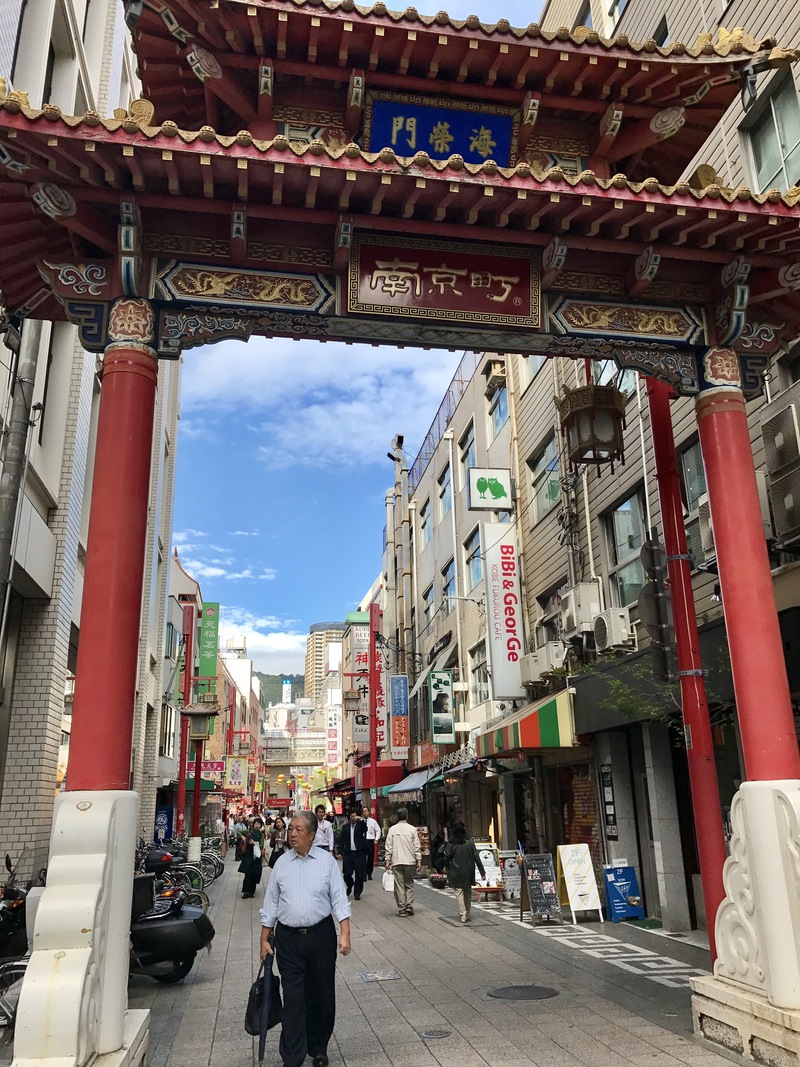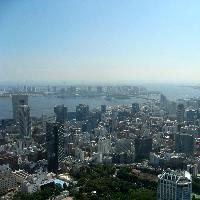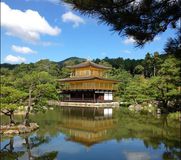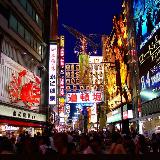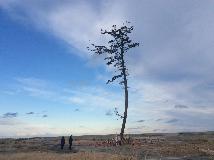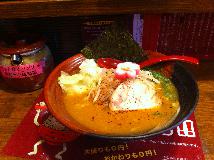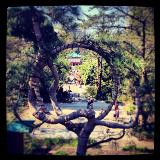By Thomas Baudientte
Recorded by Carolyn Stevens
Wed Mar 26 2014
Sensoji Temple in Asakusa is Tokyo's oldest and most popular temple and is a popular tourist attraction, drawing in millions of tourists annually. Sensoji is also a popular place for Japanese to pay their respects to the gods during New Year. Constantly filled with bustling crowds, Sensoji evokes a sense of the shitamachi culture and represents a space many come to experience "authentic" Edo culture.

View of the gates from the main hall of Sensoji
We made a number of recordings at the temple. The first was taken in the shotengai (shopping street) before the temple which one must walk down on one's way to the honten (main hall in which the image of the Boddhisatva Avalokiteśvara, or Kannon Bosatsu, is enshrined). It is filled with people and souvenir and snack stalls. The first recording was taken in front of a ningyoyaki snack stall (ningyoyaki are popular fried sweet pastries sold throughout the shitamachi). The store had a large machine in the back which made ningyoyaki at an alarming frequency- it was also very loud.

Ningoyaki store at Sensoji
At the start of the recording, you can hear the bustling crowd and, vaguely, the sounds of the operators of stalls calling to passers-by to invite them to examine their wares. Throughout the recording, one can hear the hissing and clunking of the ningyoyaki machine as it churns out the sweets- this machine was a mini tourist attraction in itself and you can hear the crowds of people clamouring to see it. Towards the end of the recording, the old man who runs the shop started to call out to the crowd: "Hai, dozo... ningyoyaki... [interference from wind] yakitate... juu-ko sanbyaku-en!" (Hey, come have a look... ningyoyaki, freshly baked.... just 300 yen for 10 pieces!). As it was quite windy when we visited, you can hear the wind as it interferes with our recorder. At the very end, you can just make out the sounds of an elderly woman in the store begin a transaction with a customer.
The second recording was taken just before the honten. In this recording, you can hear the shaking of the metal container which contains o-mikuji, random fortunes written on paper which one can receive from temples after making a small donation (100 yen or so). In the recording, one can hear the shaking of the container, so that the o-mikuji become loose and fall through a small hole in the bottom of the container. The rattling is quite startling, however it fails to make a dint into the sounds of the crowd at Sensoji. Also in this recording you can hear a tour guide explaining the history of the temple to a school tour group: she speaks in slow, controlled language and projects her voice over the hubbub of the ubiquitous crowds. The wind also can be heard in this recording.
Click to Play Sound: Sensoji 1

The shotengai where souvenirs can be purchased
Picture and recording credits Carolyn Stevens.
Text Thomas Baudinette
